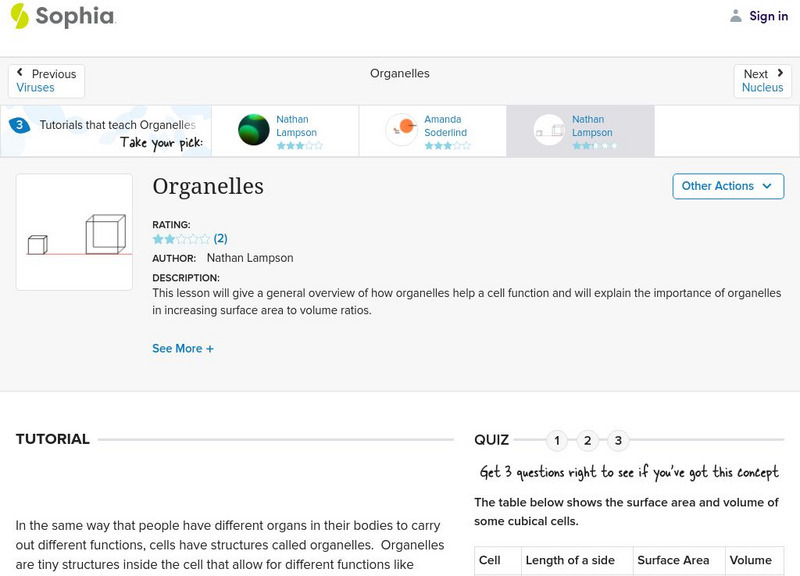Khan Academy
Khan Academy: Cell Size
Test your knowledge on how to calculate cell size with this quiz.
Texas Instruments
Texas Instruments: The Bigger the Better?
In this activity, students calculate the surface area and volume of different shaped cell models. They develop an understanding of the differences in cells and their function
Alabama Learning Exchange
Alex: How Big Can a Bee Be?
Students will study the relationship between surface area and volume. Math, science, and technology components are included.
Sophia Learning
Sophia: Organelles: Lesson 2
This lesson will give a general overview of how organelles help a cell function and will explain the importance of organelles in increasing surface area to volume ratios. It is 2 of 3 in the series titled "Organelles."
Sophia Learning
Sophia: Organelles: Lesson 3
This lesson will give a general overview of how organelles help a cell function and will explain the importance of organelles in increasing surface area to volume ratios. It is 3 of 3 in the series titled "Organelles."
National Health Museum
Access Excellence: Modeling Limits to Cell Size
Why can't cells continue to grow larger and larger to become giant cells, like a blob? Why are most cells microscopic in size? Find out answers to these questions through this "hands-on" activity that simulates the changing relationship...
Illustrative Mathematics
Illustrative Mathematics: G Mg Hexagonal Pattern of Beehives
Beehives are made of walls, each of the same size, enclosing small hexagonal cells where honey and pollen are stored and bees are raised. This problem examines some of the mathematical advantages of the hexagonal tiling in a beehive....








